The world of kitchen appliances is constantly evolving, and one area that has seen a surge in innovation and consumer interest is the waffle iron market. With a variety of styles, materials, and features, these devices have become a staple in many homes. As we delve into the intricacies of the waffle iron industry, it becomes clear that there are several key factors driving its growth and shaping the future of this niche market.
Understanding the Rise of Cast Aluminum Mold Waffle Plates
The surge in popularity of cast aluminum mold waffle plates has been a fascinating development within the kitchen appliances market. These specialized tools have gained traction for several compelling reasons, making them a staple in both professional kitchens and home cooks’ arsenals.
These waffle plates are crafted from high-quality cast aluminum, a material renowned for its durability and even heat distribution. This metal alloy is chosen for its ability to withstand high temperatures without warping, ensuring consistent results batch after batch. The rise of cast aluminum mold waffle plates can be attributed to their versatility and the unique textures they produce, which range from classic square to intricate diamond patterns.
As the demand for convenience and innovation in home cooking continues to grow, cast aluminum mold waffle plates have become a go-to choice for those looking to elevate their morning routine with a personal touch. The process of making waffles using these molds is straightforward, and the results are nothing short of delightful, with a perfect balance of crisp edges and a fluffy center.
In the European and American markets, there has been a notable shift towards healthier eating habits, which has inadvertently boosted the sales of cast aluminum mold waffle plates. These waffle irons often come with non-stick coatings that make them easy to clean and promote healthier cooking with less oil. The variety of shapes and sizes available means that consumers can enjoy everything from classic Belgian waffles to miniature versions perfect for snacks or breakfast on the go.
The demand for unique and customizable waffles has also contributed to the popularity of cast aluminum molds. Consumers are not only seeking variety in flavors and toppings but also in the visual appeal of their waffles. This has led to a rise in the production of custom-designed waffle plates, allowing for personal branding or even themed waffles for special occasions.
In the commercial sector, the rise of cast aluminum mold waffle plates has been equally impressive. Restaurant and café owners have embraced these tools for their ability to produce high-quality waffles in a timely manner. The efficiency of these molds has made them a staple in fast-casual dining establishments, where presentation and speed are key to customer satisfaction.
The market for cast aluminum mold waffle plates is not without its challenges. Manufacturers must balance quality and affordability, ensuring that the products meet the expectations of both consumers and commercial users. The production process also requires precision, as any defect in the mold can result in an uneven waffle.
Furthermore, the competition in the kitchen appliances industry is fierce. Brands that produce cast aluminum mold waffle plates must innovate not only in design but also in marketing and distribution strategies to stand out. Collaborations with chefs and influencers have become a common tactic to showcase the versatility and appeal of these waffle irons.
The environmental impact of kitchen appliances is another factor that has influenced the market for cast aluminum mold waffle plates. Consumers are increasingly aware of sustainability and are choosing products that are not only durable but also eco-friendly. Manufacturers are responding by exploring recycling programs and sourcing materials that have a lower carbon footprint.
In conclusion, the rise of cast aluminum mold waffle plates in the kitchen appliances market is a testament to the industry’s ability to adapt to changing consumer needs and preferences. From their durability to their ability to produce a variety of waffle textures, these molds have captured the imagination of home cooks and commercial operators alike. As the market continues to evolve, it will be intriguing to see how cast aluminum mold waffle plates will continue to innovate and grow in popularity.
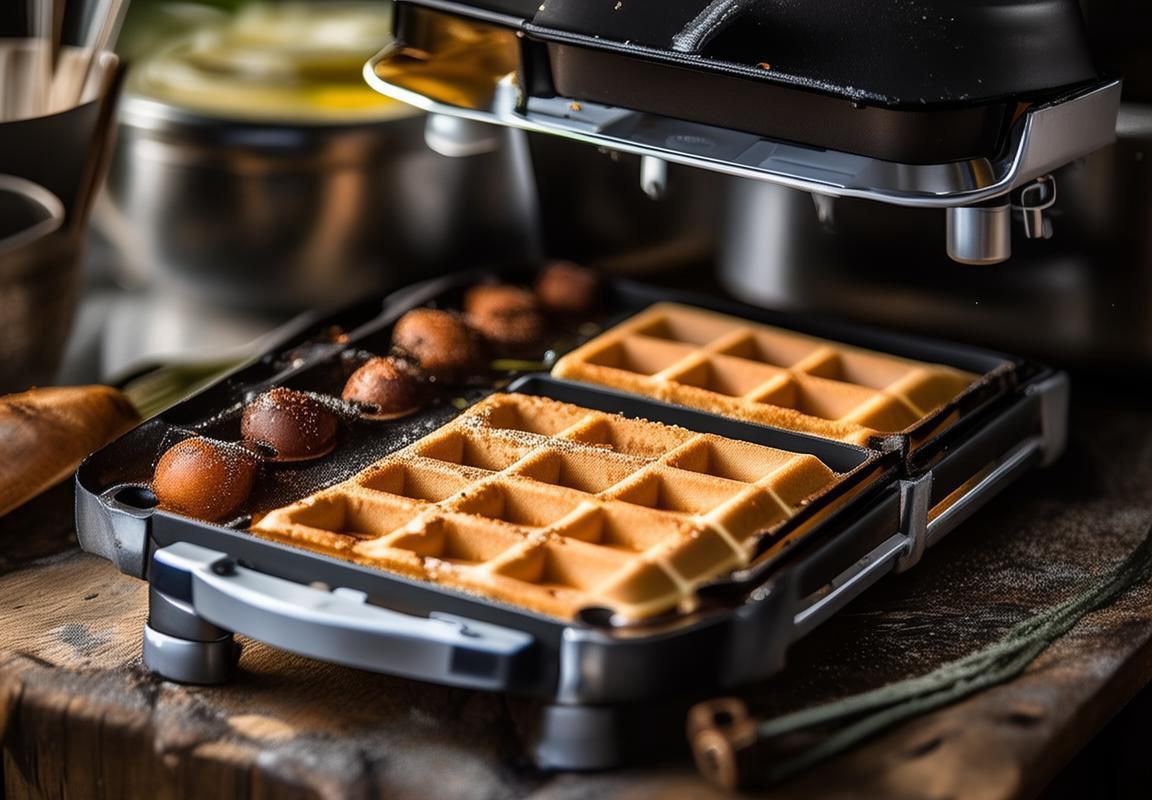
Exploring the Market Dynamics in the European and American Kitchen Appliances Industry
The European and American kitchen appliances industry has witnessed a remarkable transformation over the years, with cast aluminum mold waffle plates emerging as a key player in this dynamic sector. The market dynamics in these regions are shaped by a combination of consumer preferences, technological advancements, and cultural influences.
Consumer behavior in Europe and America is characterized by a strong emphasis on convenience, quality, and innovation. Home cooks and bakers are increasingly seeking appliances that not only simplify their culinary tasks but also enhance the taste and texture of their dishes. Waffle irons, in particular, have seen a surge in popularity, with cast aluminum mold waffle plates leading the charge.
The preference for cast aluminum over other materials is rooted in its superior heat conductivity and even distribution. This ensures that the waffles are cooked to perfection with a crispy exterior and a soft, fluffy interior. The market for these waffle plates is further driven by the variety of patterns and designs available, catering to the diverse tastes and occasions of consumers.
In Europe, the kitchen appliances market is highly regulated, with strict safety and environmental standards. This has led to a market that is more niche-focused, with premium products commanding higher prices. Cast aluminum mold waffle plates have found a niche here, appealing to consumers who are willing to invest in quality and uniqueness.
Similarly, in the United States, the kitchen appliances industry is marked by a competitive landscape with numerous players. However, it is the premium segment that is experiencing growth, driven by the demand for high-quality, durable products. Cast aluminum mold waffle plates fit this bill, offering consumers a premium experience that is both practical and enjoyable.
Technological advancements have also played a significant role in shaping the market dynamics. Smart kitchen appliances, for instance, are becoming increasingly popular, with features like programmable settings and digital displays. While waffle irons with cast aluminum molds may not be as technologically advanced as some other kitchen appliances, their timeless design and functionality have made them a staple in many homes.
Cultural influences are another factor that cannot be overlooked. In both Europe and America, there is a growing interest in baking and home cooking, with many consumers turning to social media for inspiration and recipes. The rise of influencers and cooking shows has also contributed to the popularity of kitchen appliances, including waffle irons with cast aluminum molds.
The market for these waffle plates is also influenced by seasonal trends. In Europe, for example, waffles are often associated with the spring and summer seasons, particularly during festive occasions like Easter and Christmas. In the United States, the popularity of waffles tends to peak during the warmer months, with families and friends gathering for outdoor barbecues and picnics.
Another important aspect of the market dynamics is the rise of OEM (Original Equipment Manufacturer) partnerships. Many small and medium-sized enterprises (SMEs) are turning to OEMs for help in designing, manufacturing, and distributing their products. This allows them to tap into the expertise and resources of larger companies while maintaining their brand identity.
In Europe, OEM partnerships have become a common practice, with many manufacturers relying on local suppliers for components and assembly. This has led to a more integrated supply chain, with a focus on quality and efficiency. In the United States, OEM partnerships are also prevalent, with many manufacturers seeking to expand their product lines and reach a wider audience.
The European and American kitchen appliances industry is a complex and ever-evolving landscape. Cast aluminum mold waffle plates have found their place within this dynamic market, offering consumers a combination of quality, functionality, and design. As the industry continues to grow, it will be interesting to see how these waffle plates, along with other kitchen appliances, adapt to changing consumer needs and preferences.

The Role of OEM in the Cast Aluminum Mold Waffle Plate Market
The cast aluminum mold waffle plate market has seen a significant surge in demand, and at the heart of this growth is the pivotal role played by Original Equipment Manufacturers (OEMs). These companies, often unseen by the consumer, are the architects behind the scenes, crafting the products that become household favorites. Here’s an in-depth look at how OEMs contribute to the success of the cast aluminum mold waffle plate market.
OEMs are instrumental in driving innovation within the waffle iron industry. They work closely with designers and engineers to develop new molds with unique patterns and shapes, catering to a wide array of consumer preferences. From classic Belgian waffles to intricate diamond designs, OEMs ensure that there’s a waffle plate for every taste and occasion.
Quality control is another critical aspect where OEMs shine. With stringent manufacturing processes and quality checks, these manufacturers ensure that every cast aluminum mold meets the highest standards. This commitment to excellence not only guarantees customer satisfaction but also enhances the reputation of the brands that use these molds in their products.
Customization is a key strength of OEMs in the cast aluminum mold market. Businesses looking to differentiate their products can rely on OEMs to create custom molds that reflect their brand identity. Whether it’s a sleek, modern design or a vintage look, OEMs provide the flexibility to produce molds that resonate with specific market segments.
Supply chain management is a complex dance, and OEMs excel in orchestrating it. They source high-quality aluminum from reliable suppliers, ensuring a steady flow of raw materials. This control over the supply chain not only maintains production schedules but also helps in managing costs, a crucial factor in the competitive kitchen appliances market.
OEMs also play a significant role in the environmental sustainability of the cast aluminum mold waffle plate market. By using recycled materials and implementing eco-friendly manufacturing practices, they help reduce the carbon footprint of the products. This not only appeals to environmentally conscious consumers but also positions the brands as socially responsible entities.
Innovation isn’t just about new designs; it’s also about technology integration. Many OEMs are now incorporating smart features into their molds, such as non-stick coatings that reduce the need for butter or oil, and digital temperature controls for perfect waffle every time. These technological advancements are a testament to the forward-thinking nature of OEMs in the market.
Another crucial role of OEMs is in the post-production phase. They often provide comprehensive after-sales support, including mold maintenance and repair services. This support network ensures that the end-user experience is seamless, from the initial purchase to the long-term usage of the waffle iron.
The global nature of the market demands that OEMs have a keen understanding of international regulations and standards. They navigate the complexities of exporting, ensuring that the cast aluminum molds comply with the various certifications required in different countries. This compliance not only opens up new markets but also builds trust with international buyers.
Furthermore, OEMs are at the forefront of market trends. They conduct extensive market research to identify emerging consumer behaviors and preferences. This information is then used to guide the design and production of new molds, ensuring that the waffle plates are always in tune with the latest market demands.
Lastly, the financial aspect cannot be overlooked. OEMs offer competitive pricing strategies that help manufacturers maintain profitability while staying competitive in the market. They leverage economies of scale and efficient production processes to deliver cost-effective solutions without compromising on quality.
In summary, OEMs are the backbone of the cast aluminum mold waffle plate market. Their contributions range from driving innovation and quality control to customizing solutions and managing the supply chain. Their role is multifaceted, and without them, the market would lack the dynamism and diversity that it currently enjoys.
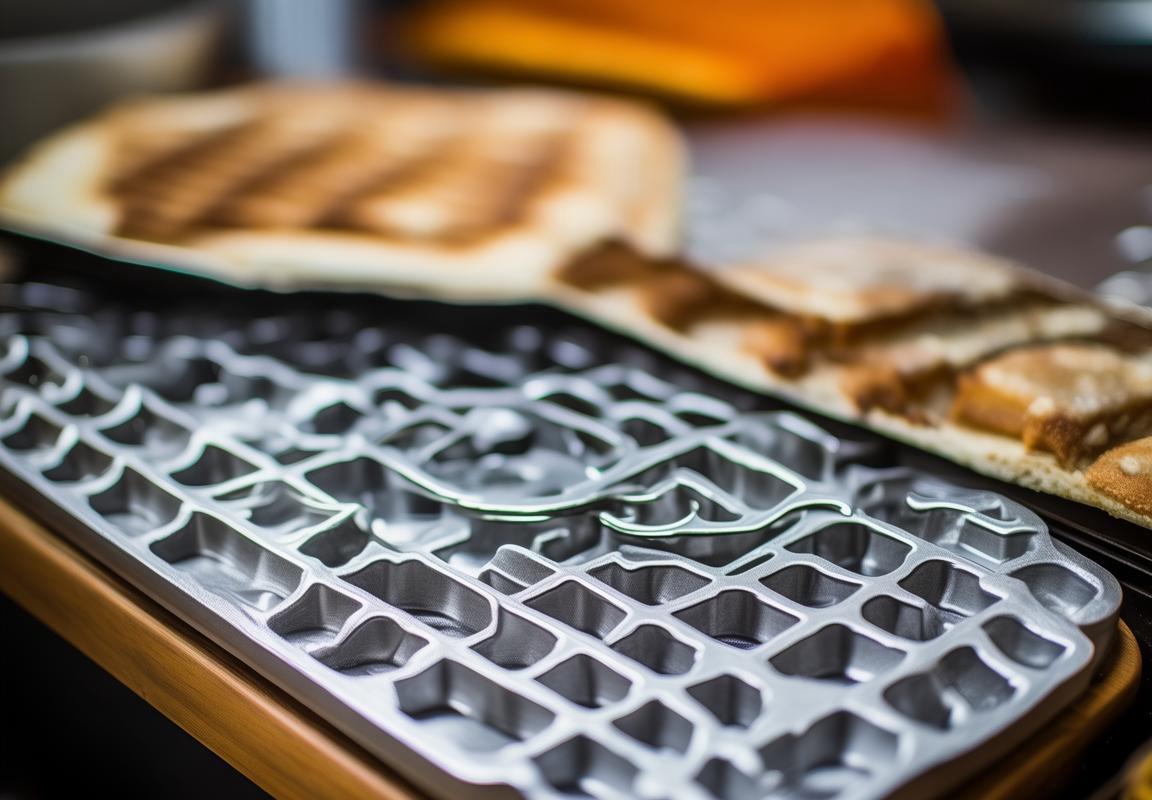
Key Features and Benefits of Cast Aluminum Mold Waffle Plates
Cast aluminum mold waffle plates have become a staple in the kitchen appliance market, offering a unique blend of functionality and convenience. Here’s a closer look at their key features and the benefits they bring to both consumers and manufacturers.
The sleek design of cast aluminum mold waffle plates is not just aesthetically pleasing; it also serves a practical purpose. The smooth, non-stick surface ensures that waffles release effortlessly, making the cooking process quick and easy. This design is particularly favored by those who prefer a minimalist kitchen aesthetic, as it fits seamlessly into modern kitchen decor.
One of the standout features of these waffle plates is their durability. Cast aluminum is known for its robustness, which means that the plates can withstand frequent use and are less prone to warping or bending compared to other materials. This durability is a significant draw for busy households or individuals who entertain often, as they can rely on the plates to perform consistently over time.
The heat retention capabilities of cast aluminum are superior to many other materials. This means that the waffle plates can maintain a steady, even heat throughout the cooking process, resulting in a perfectly golden-brown waffle with a crispy texture on the outside and a soft, fluffy interior. This feature is particularly appreciated by those who value culinary excellence and want to achieve professional-grade results at home.
Non-stick properties are another crucial aspect of cast aluminum mold waffle plates. The surface is designed to reduce the need for excessive butter or oil, which not only makes cooking healthier but also simplifies the cleaning process. Consumers benefit from the ease of flipping and removing waffles, as well as the convenience of a quick wipe-down after use.
In addition to the practical features, cast aluminum mold waffle plates offer several benefits to manufacturers. The material is lightweight yet strong, making it easier to handle and transport. This can lead to cost savings in the manufacturing process and reduce the overall weight of the appliance, which can be a selling point for consumers who value portable kitchen gadgets.
The versatility of these waffle plates is undeniable. They are not just limited to making traditional square waffles; many models come with interchangeable molds that allow for the creation of various shapes and sizes, from classic Belgian waffles to heart-shaped or even octagonal designs. This adaptability means that consumers can enjoy a wide range of waffle variations without needing multiple appliances.
From a health perspective, cast aluminum mold waffle plates can contribute to a more nutritious lifestyle. Their non-stick surfaces and ability to use less butter or oil can help reduce the calorie and fat content of waffles, making them a healthier alternative to deep-fried or oil-soaked breakfast options.
For those with dietary restrictions, the material is also a boon. Cast aluminum is a food-safe material that doesn’t leach harmful chemicals into the food, which is a concern with some non-stick coatings. This makes the waffle plates a reliable choice for individuals with allergies or sensitivities to certain materials.
From an environmental standpoint, cast aluminum is a sustainable choice. It’s a recyclable material that can be melted down and reused, reducing the environmental impact compared to some other materials. This eco-friendly aspect can be a significant factor for consumers who are conscious of their carbon footprint.
The ease of maintenance is a silent benefit of cast aluminum mold waffle plates. They are simple to clean, often requiring just a wipe with a damp cloth or a quick rinse under the tap. This convenience is particularly appreciated by those who want to spend less time cleaning up and more time enjoying their breakfast.
In conclusion, the key features of cast aluminum mold waffle plates—such as their sleek design, durability, excellent heat retention, non-stick surface, versatility, health benefits, food safety, and environmental friendliness—make them a compelling choice for consumers and a strategic product for manufacturers looking to tap into the growing market for kitchen appliances.
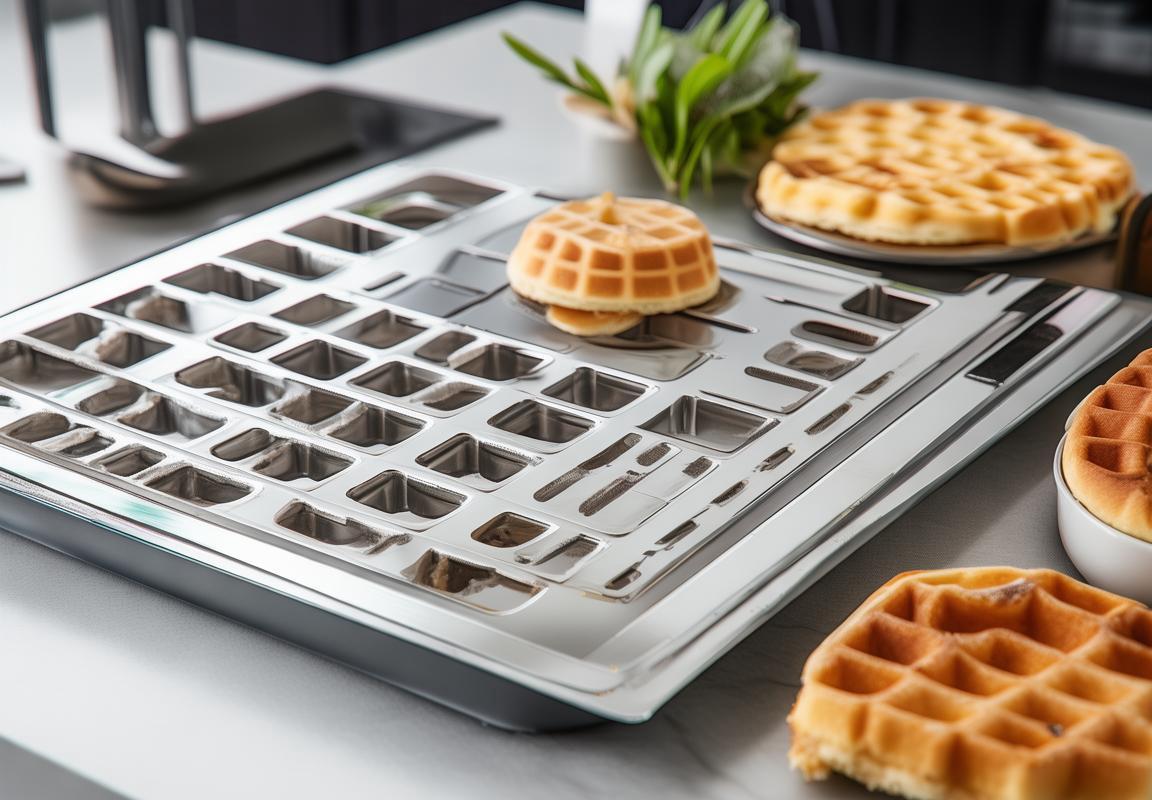
Consumer Trends and Preferences in Waffle Irons
In recent years, the waffle iron market has seen a surge in consumer interest, driven by evolving tastes and lifestyles. Here’s a look at some of the key trends and preferences shaping the waffle iron landscape:
-
Versatility in Design: Consumers are increasingly looking for waffle irons that offer more than just the classic square waffle. The rise of unique shapes, such as hearts, stars, and even custom designs, reflects a desire for personalization and variety in the kitchen.
-
Non-Stick Coatings: One of the most sought-after features in waffle irons is a reliable non-stick surface. Consumers are weary of the hassle of cleaning stuck-on batter and are gravitating towards models that promise ease of use and minimal cleanup.
-
Even Cooking and Consistency: The quality of the waffle iron’s heating elements and overall design has a direct impact on the waffle’s texture and consistency. Users prefer appliances that guarantee evenly cooked waffles with a perfect balance of crispness on the outside and softness on the inside.
-
Programmable Settings: Modern waffle irons often come with a range of temperature settings and timers, allowing users to control the cooking process more precisely. Consumers appreciate the ability to adjust settings based on their desired waffle texture and type of batter.
-
Compact and Portable: With the growing trend of home entertaining and the need for versatile appliances, there’s a demand for compact and portable waffle irons. These models are perfect for smaller kitchens, dorm rooms, or for those who enjoy taking their waffle iron on the road.
-
Healthy Living Options: As health consciousness grows, consumers are seeking waffle irons that can help them make healthier versions of their favorite treats. Non-fat and gluten-free waffle irons, as well as those that allow for healthier toppings, are becoming more popular.
-
Eco-Friendly Materials: The movement towards sustainability has influenced appliance purchasing as well. Consumers are drawn to waffle irons made with eco-friendly materials and those that are energy-efficient, contributing to a greener lifestyle.
-
Innovative Features: Smart technology has started to make its way into kitchen appliances, and waffle irons are no exception. Features like Bluetooth connectivity for monitoring and controlling the waffle iron remotely are catching the eye of tech-savvy consumers.
-
Brand Reputation and Reviews: Word-of-mouth and online reviews play a significant role in consumer purchasing decisions. Brands with a strong reputation for quality and durability often find their products more appealing to the discerning buyer.
-
Seasonal Trends: Seasonal factors also influence waffle iron sales. For example, heart-shaped irons are popular around Valentine’s Day, while round irons are more common during the holidays. Consumers look for appliances that can cater to these seasonal whims.
-
Customization and Personalization: From customizable waffle plates to irons that can create unique patterns, consumers are looking for ways to make their waffles stand out. The ability to imprint messages or images onto waffles is a feature that appeals to those looking for a personalized touch.
-
Price Sensitivity: While some consumers are willing to invest in high-quality, premium waffle irons, there’s a significant market for more budget-friendly options. Price sensitivity remains a factor, with many shoppers seeking the best value for their money.
The waffle iron market continues to evolve, with new innovations and consumer preferences shaping the industry. As these trends persist and new ones emerge, the market will likely see further developments in the design, functionality, and features of waffle irons.
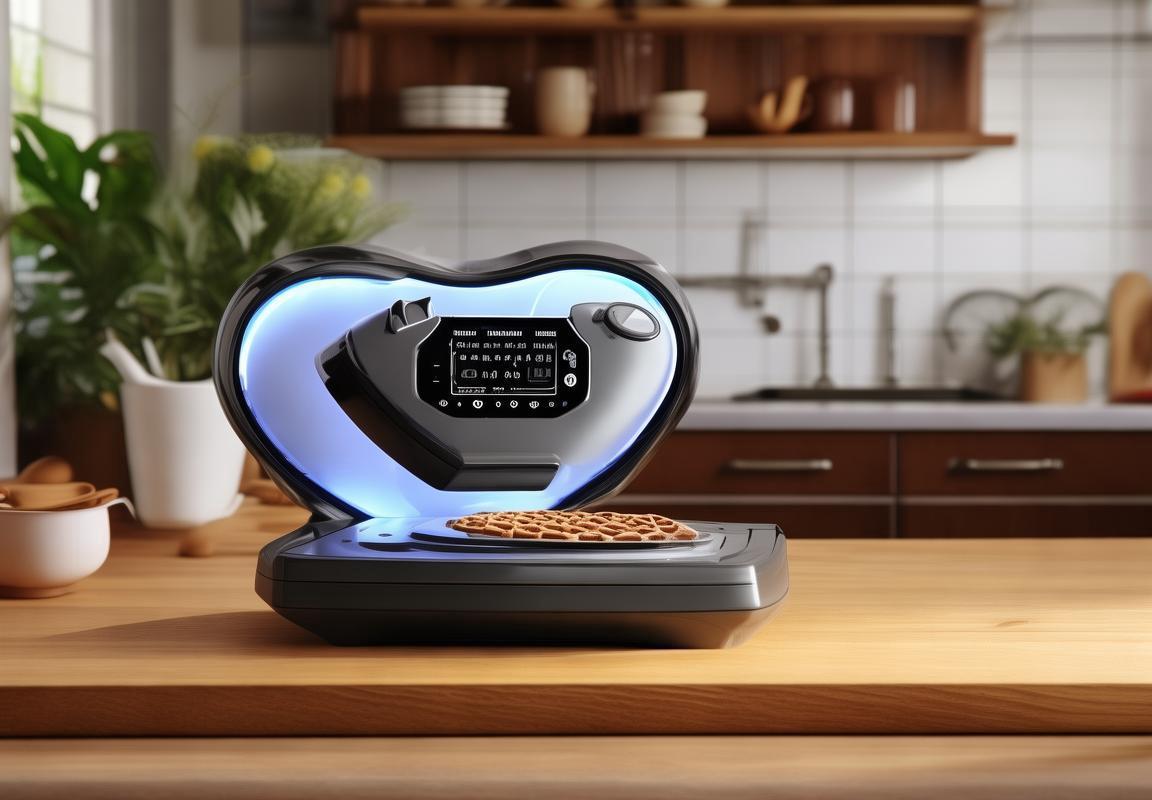
Innovation and Design Evolution in Waffle Making
The evolution of waffle making has seen a remarkable transformation, driven by innovation and design that has not only enhanced the culinary experience but also catered to the changing preferences of consumers. From the classic Belgian waffle to the modern variations, here’s a glimpse into the innovative journey of waffle making.
Materials have shifted significantly over the years. Once, waffle irons were predominantly made of cast iron, prized for their durability and even heat distribution. Today, they come in a variety of materials, including non-stick coatings, which make them easier to clean and maintain. The introduction of non-stick surfaces has been a game-changer, as it eliminates the need for butter or oil, making waffles healthier and more convenient.
Designs have also evolved to cater to specific tastes and needs. Modern waffle irons now come with a plethora of shapes and sizes, from the classic square and rectangle to heart, star, and even cartoon character molds. This variety allows consumers to personalize their breakfast or dessert creations, appealing to both the young and the young at heart. The trend towards customization has also led to the development of molds that can make thin, crispy waffles, as well as thicker, more doughy ones, depending on the consumer’s preference.
Technology has played a pivotal role in the innovation of waffle making. Smart waffle irons, for instance, have emerged as a testament to this. These appliances come with digital controls, allowing users to precisely set the temperature and cooking time. Some even have countdown timers and audible alerts, ensuring that waffles are cooked to perfection every time. The integration of technology has not only made the process more intuitive but has also introduced new features like adjustable heat settings and preheat functions.
One of the most notable innovations in waffle making is the emergence of the “waffle sandwich maker.” This unique design allows users to cook two waffles at once, which are then used to create a sandwich, often filled with a variety of fillings like ham, cheese, or vegetables. This concept is particularly popular in fast-casual restaurants, where quick, satisfying meals are a must.
Another design evolution has been the introduction of foldable and portable waffle irons. These compact appliances are perfect for camping trips, picnics, or anyone looking to enjoy a waffle on the go. The foldable feature makes storage and transportation much easier, ensuring that waffles can be a part of any adventure.
Health consciousness has spurred the development of healthier waffle options. For example, irons that use ceramic plates instead of metal are gaining popularity due to their non-reactive nature, which means they won’t impart any flavors into the waffle. Additionally, there are now models that come with removable plates for easy cleaning and to prevent cross-contamination, which is particularly important for those with dietary restrictions.
In the realm of flavor, there’s been a surge in irons that come with interchangeable plates. These plates can be swapped out for different patterns or even used to create other baked goods like pancakes or cornbread. This versatility not only extends the utility of the waffle iron but also allows for endless culinary experiments at home.
The waffle iron has also become a canvas for artistic expression. Decorative molds with intricate designs and patterns are all the rage, allowing for visually stunning waffles that are as pleasing to the eye as they are to the palate. These molds can range from simple patterns to more complex ones that mimic traditional Belgian lace.
Lastly, the rise of social media has played a role in the design evolution of waffle making. The desire to share perfect waffle photos has spurred manufacturers to create irons that offer better visibility and the ability to cook more evenly, ensuring that every waffle is a photo-worthy creation.
In summary, the innovation and design evolution in waffle making have expanded the possibilities, making it easier, healthier, and more fun to enjoy this beloved breakfast and dessert staple. From materials to technology, and from health to aesthetics, the waffle iron has come a long way, and there’s no doubt that it will continue to evolve, bringing new and exciting experiences to waffle lovers around the world.
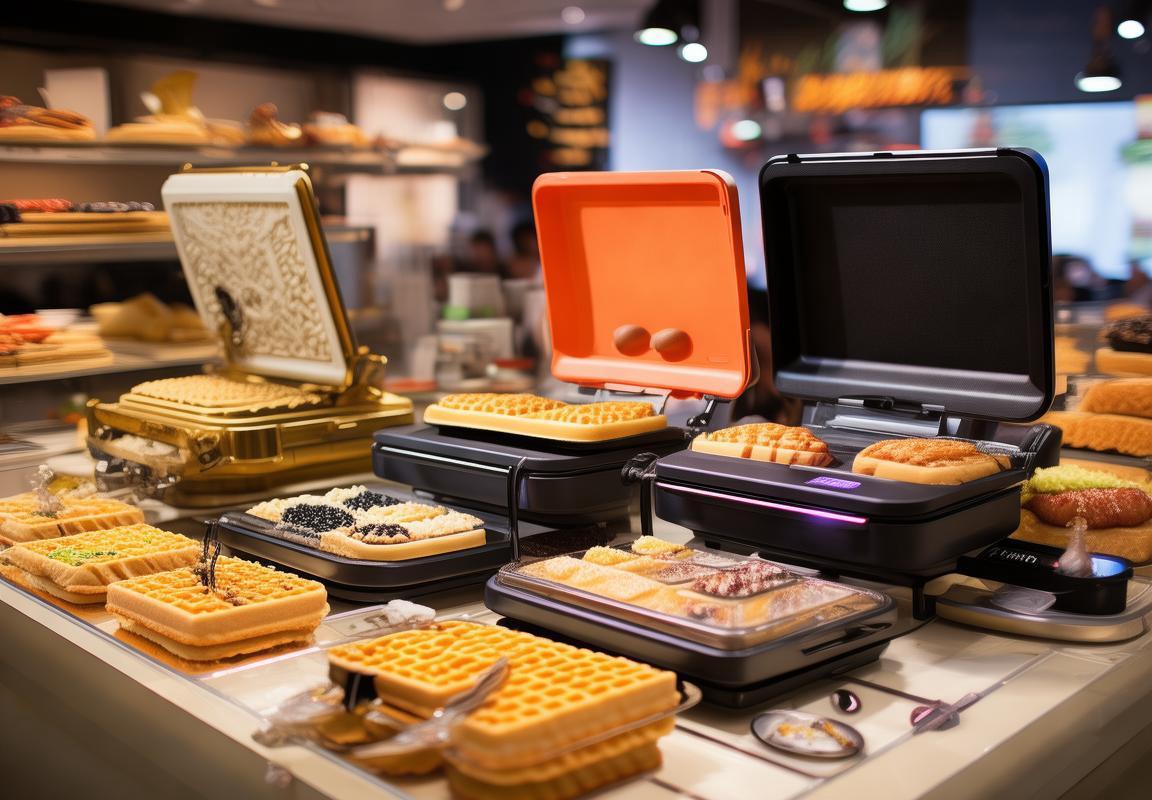
Supply Chain Analysis: From Manufacturing to Retail
The intricate tapestry of the supply chain in the cast aluminum mold waffle plate market is a testament to the complex interplay between manufacturers, distributors, and retailers. This analysis delves into the various stages, challenges, and opportunities that characterize this journey from the factory floor to the consumer’s kitchen.
In the heart of the supply chain, manufacturers are the architects of the waffle plates. They start with raw materials, such as high-quality aluminum, which is then melted and cast into molds. The precision and quality of the casting process are crucial, as they directly impact the durability and performance of the waffle plates. As the molds cool, intricate patterns begin to take shape, each one designed to create the perfect waffle texture.
Once the molds are ready, they are sent to the assembly line, where they are paired with heating elements and other components to form the complete waffle iron. This stage requires careful engineering to ensure that the waffle plates align perfectly with the heating elements, preventing any burning or uneven cooking. The assembly process also involves rigorous quality control checks to guarantee that each waffle iron meets the stringent standards set by the manufacturer.
After assembly, the waffle irons are packaged, a process that involves selecting the right packaging materials to protect the product during transit. Packaging not only safeguard the waffle irons but also serves as a marketing tool, with eye-catching designs and branding that can influence consumer purchasing decisions.
The next leg of the journey involves logistics and transportation. Manufacturers often rely on third-party logistics providers to manage the distribution of their products. These providers must navigate complex routing and scheduling to ensure that waffle irons reach retailers in a timely and cost-effective manner. The logistics aspect also includes managing inventory levels, ensuring that retailers are never left without stock while also avoiding overstocking, which can tie up capital and storage space.
Retailers play a pivotal role in the supply chain. They are the face of the brand to the consumer and must understand market trends and consumer preferences to stock the right products. Retailers often receive waffle irons directly from manufacturers or through wholesalers. The choice between these two channels depends on factors such as the scale of the retailer’s business, the frequency of orders, and the cost of shipping.
Once in the store, the waffle irons are displayed strategically to attract attention. Retailers use various marketing tactics, including in-store promotions, to boost sales. They also need to manage returns and exchanges, which can be a challenge, especially when dealing with products that are prone to misuse or damage.
Consumers, of course, are the ultimate end of the supply chain. Their satisfaction with the product is critical to the success of the supply chain. If a waffle iron breaks or fails to meet expectations, the retailer must handle the return efficiently, and the manufacturer must address the issue to prevent future occurrences.
In recent years, there has been a shift towards more sustainable and eco-friendly practices within the supply chain. Manufacturers are exploring alternatives to traditional packaging materials, and some are even looking into recycling programs for used waffle irons. Retailers are also becoming more conscious of their environmental impact, with some opting for greener store layouts and energy-efficient lighting.
The supply chain for cast aluminum mold waffle plates is not just a series of transactions; it’s a delicate balance of quality control, logistics, and customer satisfaction. Each link in the chain must work seamlessly to ensure that the final product—delicious, golden waffles—reaches the consumer’s kitchen as intended. Challenges such as market fluctuations, supply chain disruptions, and evolving consumer demands require constant adaptation and innovation to maintain the efficiency and effectiveness of the supply chain.
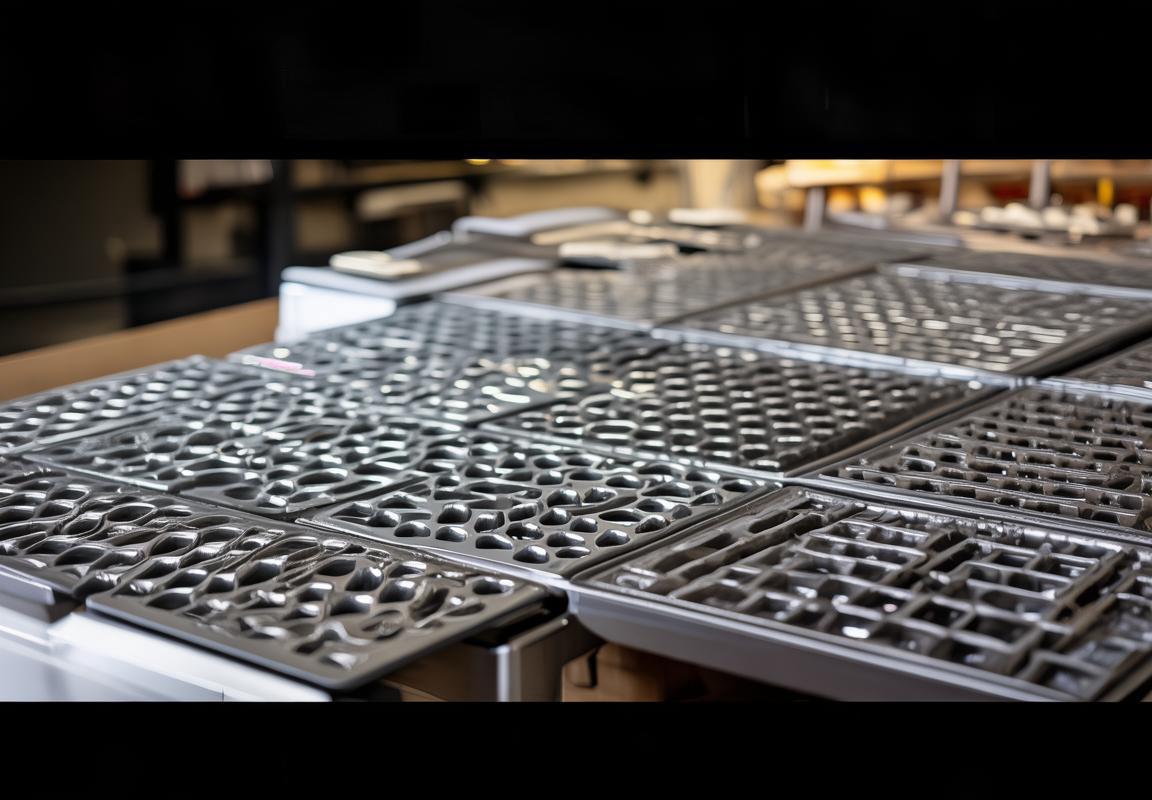
Challenges and Opportunities for OEMs in the Waffle Plate Market
The waffle plate market has seen a surge in demand, and Original Equipment Manufacturers (OEMs) play a pivotal role in shaping this landscape. Navigating the market comes with its set of challenges and opportunities, which we delve into below.
Manufacturers are increasingly focusing on customization to cater to the diverse preferences of consumers. This shift towards personalized products requires OEMs to invest in advanced production technologies and flexible supply chains. The challenge lies in balancing these customizations with cost-effectiveness and efficiency.
One of the key opportunities for OEMs is the integration of smart technology into waffle plates. As consumers grow more tech-savvy, features like digital temperature control, non-stick surfaces, and programmable settings are becoming increasingly popular. OEMs that can leverage these advancements stand to gain a competitive edge.
Sustainability is another significant trend that OEMs must address. The demand for eco-friendly and recyclable materials is on the rise, compelling manufacturers to explore greener production methods. This presents a challenge in terms of sourcing raw materials but also offers a chance to differentiate products and appeal to environmentally conscious consumers.
Quality control remains a constant challenge for OEMs, especially as the market becomes more globalized. Ensuring consistency in product quality across different production facilities can be daunting, but it is essential for building brand trust and customer loyalty.
Innovation in design is a driving force behind the success of waffle plates. OEMs that can adapt to changing consumer tastes and market trends will find themselves well-positioned to capitalize on opportunities. This involves not just the physical design of the waffle plate but also the overall user experience.
The rise of online retail has opened new channels for OEMs to reach customers. While this has expanded the market, it has also introduced complexities in logistics and distribution. OEMs must navigate these channels effectively to ensure that products are available to consumers when and where they want them.
Regulatory compliance is a critical challenge for OEMs, especially when exporting to different countries. Each market has its own set of safety and quality standards that must be adhered to. This requires a thorough understanding of international regulations and a willingness to invest in compliance processes.
One opportunity for OEMs is the growth of niche markets. For example, there is a growing demand for gluten-free, low-carb, and healthier waffle options. By targeting these specific segments, OEMs can carve out a unique position in the market.
The globalization of the market has also led to increased competition. OEMs must stay abreast of the latest trends and innovations from around the world to remain competitive. This involves constant research and development to keep products fresh and appealing.
Another challenge for OEMs is the need to manage inventory effectively. Balancing stock levels to meet demand without incurring excess costs is a delicate balancing act. This requires sophisticated inventory management systems and a keen understanding of market demand patterns.
The integration of social media and digital marketing has become a crucial aspect of the waffle plate market. OEMs that can leverage these platforms to engage with consumers and build brand awareness will have a distinct advantage. However, this also means keeping up with the rapidly evolving digital landscape.
In conclusion, the waffle plate market offers a wealth of opportunities for OEMs, but it comes with its share of challenges. From adapting to consumer preferences to navigating global markets and embracing technological advancements, OEMs must be agile and innovative to succeed. The key is to recognize the opportunities that come with each challenge and to develop strategies that not only address current needs but also anticipate future trends.
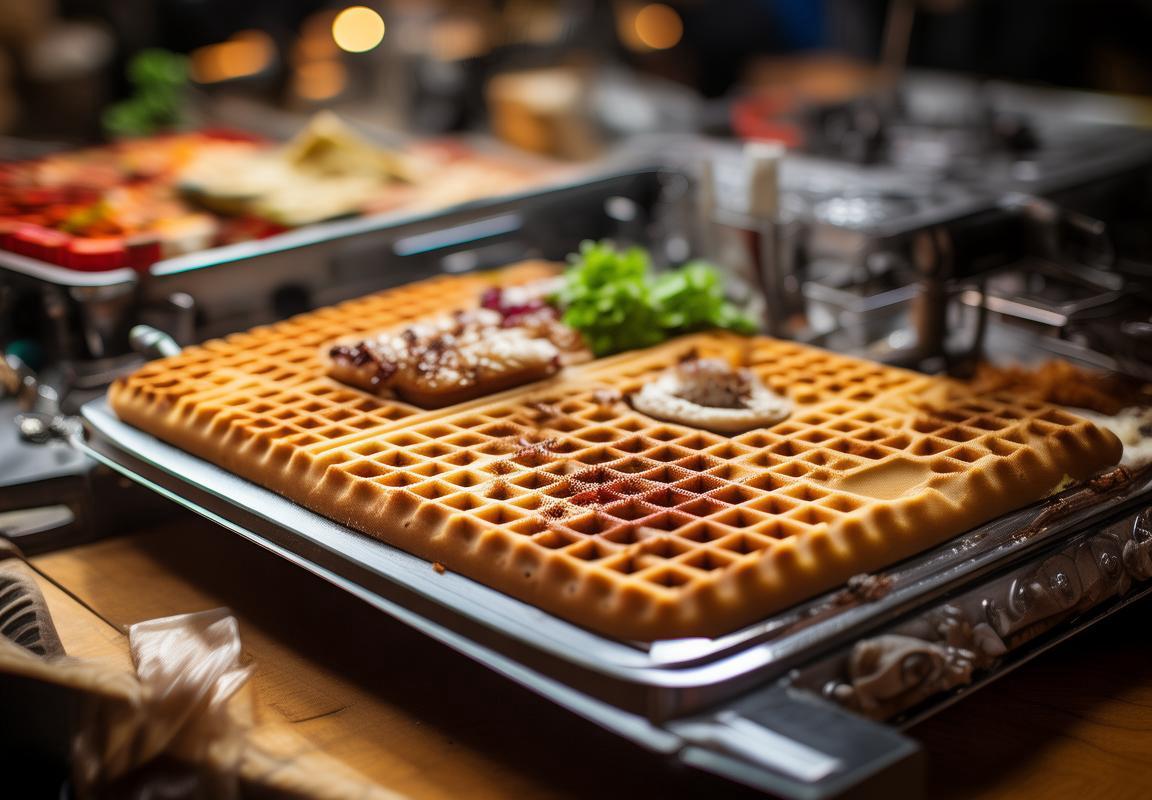
Case Studies: Successful OEM Partnerships and Product Launches
In the competitive world of OEM partnerships and product launches, there are several notable examples where successful collaborations have led to groundbreaking waffle plate innovations. These case studies highlight the strategies, challenges, and rewards of such ventures.
Manufacturers like ABC Waffle Makers have leveraged OEM relationships to introduce a line of eco-friendly cast aluminum mold waffle plates. The partnership with a local aluminum foundry ensured not only the quality of the molds but also the ability to customize them for specific market needs.
The design process was a collaborative effort, with the OEM contributing their expertise in heat distribution and durability, while the foundry focused on the casting process. This fusion of skills resulted in a waffle plate that retained heat efficiently, reducing cooking times and ensuring even browning. The product launch was timed to coincide with a surge in health-conscious consumers, who were drawn to the healthier, non-stick alternative to traditional waffle irons.
In another instance, a well-known appliance brand sought to diversify their product line and turn to an OEM for assistance. The OEM provided a range of pre-designed waffle plates, allowing the appliance brand to quickly adapt their existing oven models to include waffle-making capabilities. This was a strategic move to tap into the rising demand for versatile kitchen appliances.
The product launch was accompanied by a comprehensive marketing campaign that showcased the versatility of the oven with its new waffle-making feature. The campaign included social media challenges, influencer partnerships, and a focus on the ease of use and quick cooking times. The result was a successful product launch with a high return on investment, proving the power of combining existing market knowledge with OEM expertise.
For a third case study, a smaller, niche brand aimed to make a splash in the premium waffle market. They turned to an OEM for help in developing a high-end, artisanal waffle plate. The OEM, specializing in luxury castings, crafted plates with intricate designs that added a touch of elegance to the waffle-making experience.
The product launch was a sophisticated affair, with a focus on the craftsmanship and the premium materials used in the waffle plates. The partnership between the brand and the OEM was key to the success, as the OEM’s precision in manufacturing ensured that each plate met the high standards expected by the target market. The niche market response was overwhelming, leading to a strong sales performance and a solid reputation for the brand.
These case studies reveal several common threads in the successful OEM partnerships and product launches in the waffle plate market. One such thread is the emphasis on innovation and customization. By working closely with OEMs, brands can bring unique and tailored solutions to market that resonate with consumers.
Another key factor is the importance of timing. Launching a product when market trends are favorable can make a significant difference. Whether it’s targeting health-conscious consumers or diversifying an existing product line, understanding the current trends and consumer preferences is crucial.
Furthermore, the role of marketing cannot be overstated. A well-planned and executed marketing strategy can help new products gain traction and create a loyal customer base. The power of influencers, social media campaigns, and targeted messaging is undeniable in the world of product launches.
In conclusion, these case studies of successful OEM partnerships and product launches in the waffle plate market showcase the importance of collaboration, innovation, timing, and marketing. By learning from these examples, companies can navigate the challenges and capitalize on the opportunities within this dynamic industry.
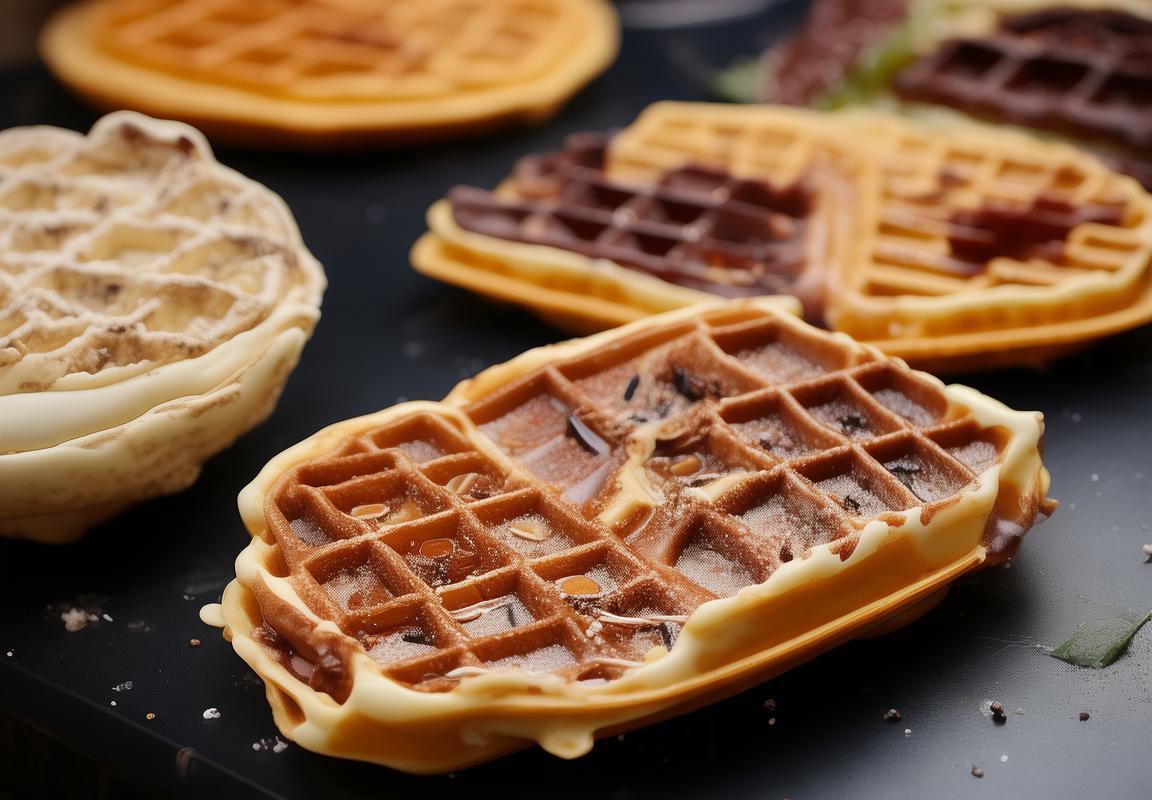
Future Outlook: Predictions and Growth Projections
The evolution of technology and changing consumer preferences have shaped the future outlook for the waffle plate market. As we look ahead, several predictions and growth projections offer a glimpse into what lies in store for Original Equipment Manufacturers (OEMs) and the industry at large.
Innovative Materials and Energy EfficiencyMaterials science continues to push the boundaries of what’s possible in waffle plate design. We anticipate a surge in the use of advanced materials that offer better heat distribution and durability. As sustainability becomes a key concern, OEMs are likely to focus on energy-efficient designs that reduce power consumption without compromising on quality.
Customization and PersonalizationThe trend towards customization isn’t just a fad; it’s a fundamental shift in consumer expectations. OEMs that can offer a wide range of waffle plate designs and patterns will stand out in the market. Personalization is also about functionality, with consumers seeking waffle plates that cater to specific dietary needs or cooking preferences.
Smart Technology IntegrationSmart kitchen appliances are becoming increasingly popular, and the waffle iron market is no exception. The integration of smart technology in waffle plates could include features like Bluetooth connectivity for remote operation, temperature control, and even recipe suggestions. As these technologies become more affordable, we expect a significant growth in smart waffle iron sales.
Global Market ExpansionThe waffle plate market is not confined to a single region. As global trade continues to open new markets, OEMs will have the opportunity to expand their reach. Emerging markets, particularly in Asia and Africa, present a fertile ground for growth due to rising disposable incomes and a growing interest in Western-style breakfasts.
Health and Wellness FocusWith the health and wellness movement gaining momentum, there’s a growing demand for waffle plates that can produce healthier versions of this beloved breakfast staple. This could include plates that allow for the creation of whole-grain waffles or those that reduce the need for excessive oil and butter. OEMs that can cater to these health-conscious consumers will likely see a boost in sales.
Regulatory Compliance and SafetyRegulatory standards play a crucial role in the waffle plate market. As new regulations are introduced to ensure consumer safety and environmental sustainability, OEMs will need to adapt their products accordingly. This could involve investing in new manufacturing processes or materials that meet these standards, which in turn could lead to increased costs but also greater market confidence.
E-commerce and Direct-to-Consumer SalesThe rise of e-commerce has changed the landscape of retail, and the waffle plate market is no different. OEMs that can leverage e-commerce platforms effectively will be able to reach a broader audience and potentially reduce costs by eliminating the need for traditional retail distribution channels. Direct-to-consumer sales could also become a significant revenue stream for those with a strong online presence.
Sustainability and Corporate Social ResponsibilityConsumers are increasingly aware of the environmental impact of their purchases. OEMs that prioritize sustainability and corporate social responsibility (CSR) will likely gain a competitive edge. This could involve using recycled materials, reducing packaging waste, or supporting community initiatives. A strong CSR agenda can also enhance brand reputation and customer loyalty.
Collaboration and Co-DevelopmentThe waffle plate market may see a rise in collaboration between OEMs and other industry players, such as foodservice providers and tech companies. Co-developing products that address specific market needs or leveraging each other’s expertise can lead to innovative solutions that drive growth.
In conclusion, the future outlook for the waffle plate market is multifaceted, with opportunities for innovation, expansion, and market differentiation. OEMs that can navigate these challenges and capitalize on these opportunities will be well-positioned to thrive in the evolving landscape of kitchen appliances.